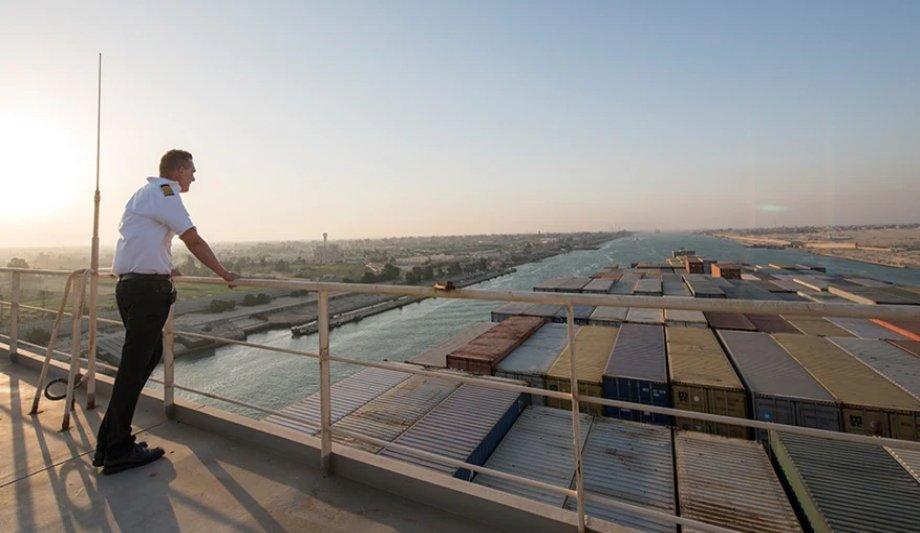On Tuesday, March 23, a 400-meter-long container vessel ran aground and became lodged sideways across the waterway in the Suez Canal.
Almost a week in and with a staggering cost of $9 billion a day in lost commerce, everyone took a collective sigh of relief when the vessel was re-floated. However, the relief was short-lived and soon after, shipping lines started to warn about ripple effects.
So What Does This Entail?
If one vessel is one week delayed and one is on time – they will be sailing in parallel on the same service – causing the ripple effects to start. Affecting near 50 Maersk vessels, the impact is significant.
- They will arrive at the terminal at the same time, which creates congestion at the terminal berth.
- Trying to discharge the vessels simultaneously will trigger yard congestions.
- Gaiting the containers out of the terminal on the truck or by train creates a bottleneck that continues throughout the logistics chain – in the warehouses, the distribution centres – the list continues.
It also impacts the available capacity to move cargo. To recover approximately a week’s delay, vessels must either call fewer ports, consolidate port calls, turn back before end rotations OR slide the entire service – meaning that all the coming vessels will be delayed.
In both these scenarios, the capacity is lost in totality or capacity is lost in certain markets – either way, it impacts customers. Catching up a 5-10-hour delay requires hard work from dedicated teams, catching up almost a full week’s delay with upstream and downstream impact requires intense commitment from a full organisation for weeks, possibly months.
Repositioning of empty containers
Another ripple effect, but equally significant is the repositioning of empty containers. Factoring in all the vessels that were late from Europe into Asia with dry containers and all the vessels that were delayed from the Middle East into Latin America with empty reefers, it equals a significant drop in availability - at a time where empty stocks are already severely impacted due to the demand pressures of 2020.
What is Maersk doing to mitigate the impact?
The first and most immediate part is working together with the customers to proactively plan the handling of delayed cargo, prioritising the most urgent/critical goods to be shipped first.
The second part is how Maersk manage the short-term booking acceptance. The integrity of the products and customer promise is paramount to serving all the customers and Maersk must ensure that what they sell, they can deliver. The new normal is still being determined, and while Maersk is deploying all the current capacity, Maersk expect the situation to remain tight into the third quarter and Maersk will need to carefully manage the intake for weeks still to come. Maersk will be in much better shape to once again cater to all the needs of the customers
Given the extraordinary market conditions triggered by both the global pandemic as well as the vessel blockage at the Suez Canal, Maersk is accelerating the injection of new dry containers into the fleet. By the end of the second quarter, Maersk will have added around 260.000 TEUs. This comes after the 400.000 TEUs already added to the fleet from July 2020 to January 2021.
In addition to these larger plays, continuous efforts are ongoing in all parts of the organisation to adjust and mitigate where Maersk can to ensure reliability in the operations. The aim is that come to the start of Q3, Maersk will be in much better shape to once again cater to all the needs of the customers.
What can a shipper do to be prepared for future disruptions?
While disruptions are not welcomed, they do happen. To be as prepared as possible, simulate the supply chain needs and focus on the elements that are critical. Building that mid-term plan and identifying possible issues early on will allow one to plot out the supply chain and will make it easier to react quickly and make decisions based on data versus time.
Business leaders can further prepare for disruptions by building resilience in their supply chains and end-to-end visibility. Supply chains are global and vulnerable, and the tactical element is to establish resilience in e.g.:
- How products are sourced and that critical components are dual sourced
- Regularly testing and building alternative means of transportation
- Different stock holding options
The key is that the resilience is scalable and agile – to be switched on and off as needed, not only from a supplier perspective but on a company level.
The strategical element is to build end-to-end visibility and being able to connect supply with demand. If this does not flow in synergy, the timely and right decisions cannot be made when disruptions happen
Partnership is key
Maersk is building robust supply chains for customers who demand integrated and sustainable solutions Integrated logistics holds some of the most untapped potentials for business growth in this decade. Working with partners that can provide detailed supply chain insights can permanently transform supply chain management into a competitive advantage. Partnering with Maersk provides a fast track to that potential by gaining control and getting access to an unmatched combination of physical assets, new digital platforms and unique competencies.
As an example, Maersk is building robust supply chains for customers such as Novo Nordisk and H&M, who demand integrated and sustainable solutions that ensure timely delivery of essential medicine and clothing to patients and consumers globally.
The people are here to serve, so don’t hesitate to reach out to the local Maersk representative and learn what Maersk can do for one and the business.
